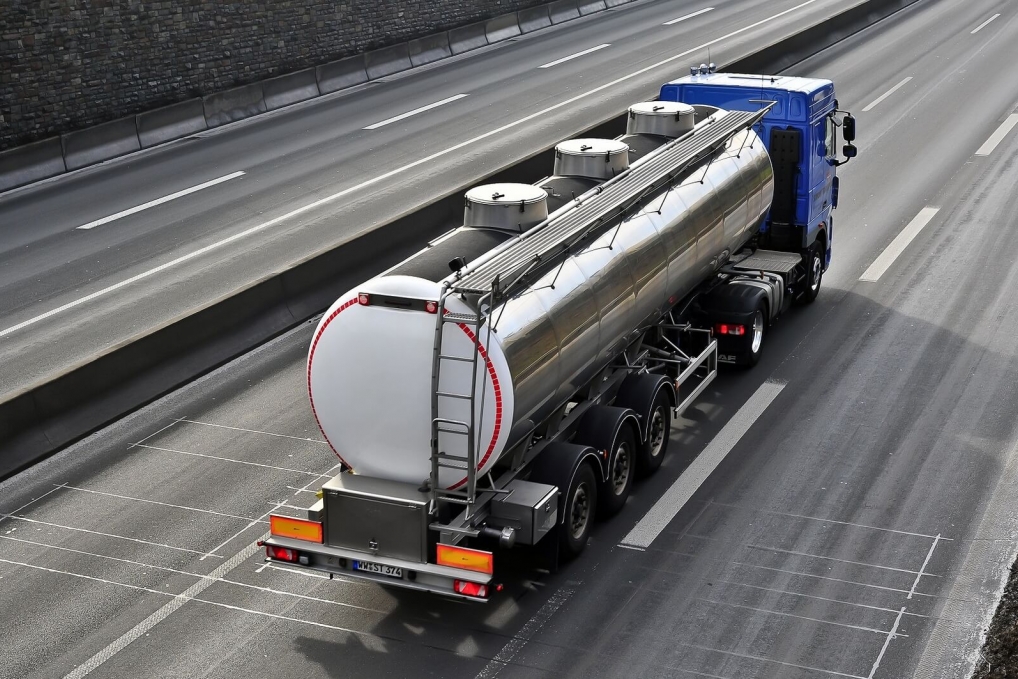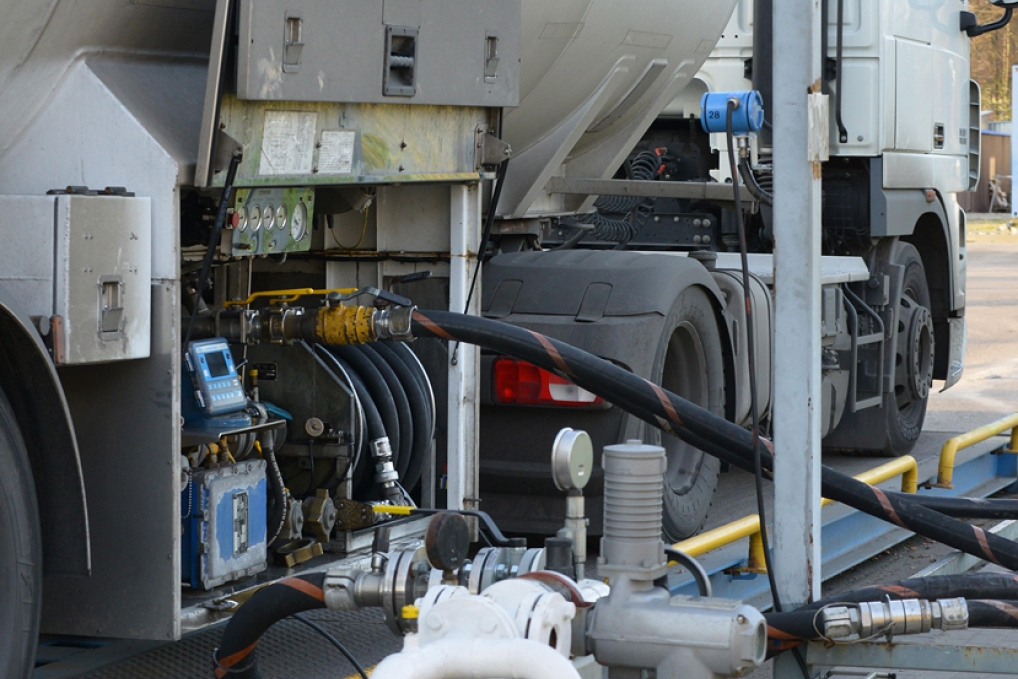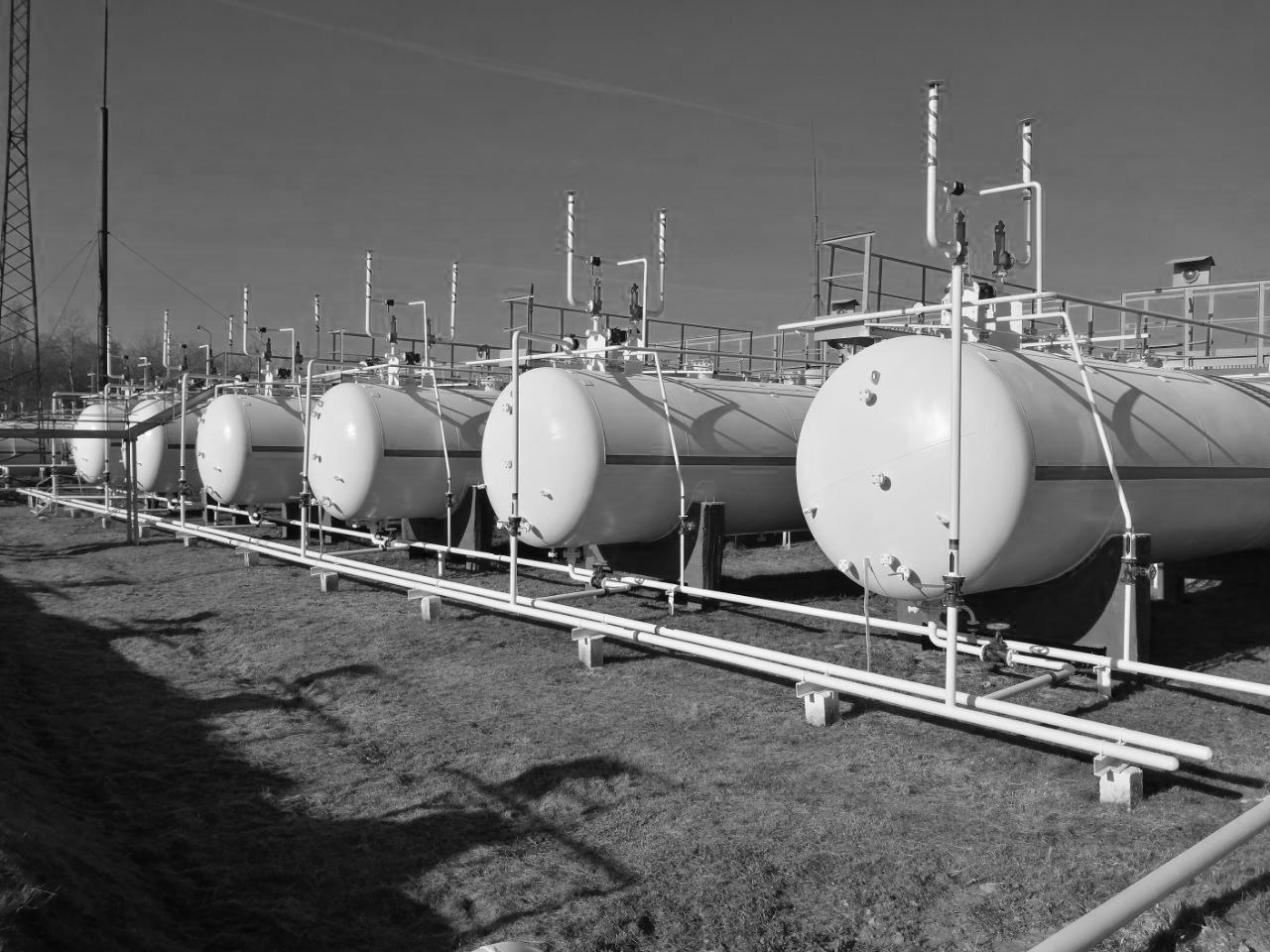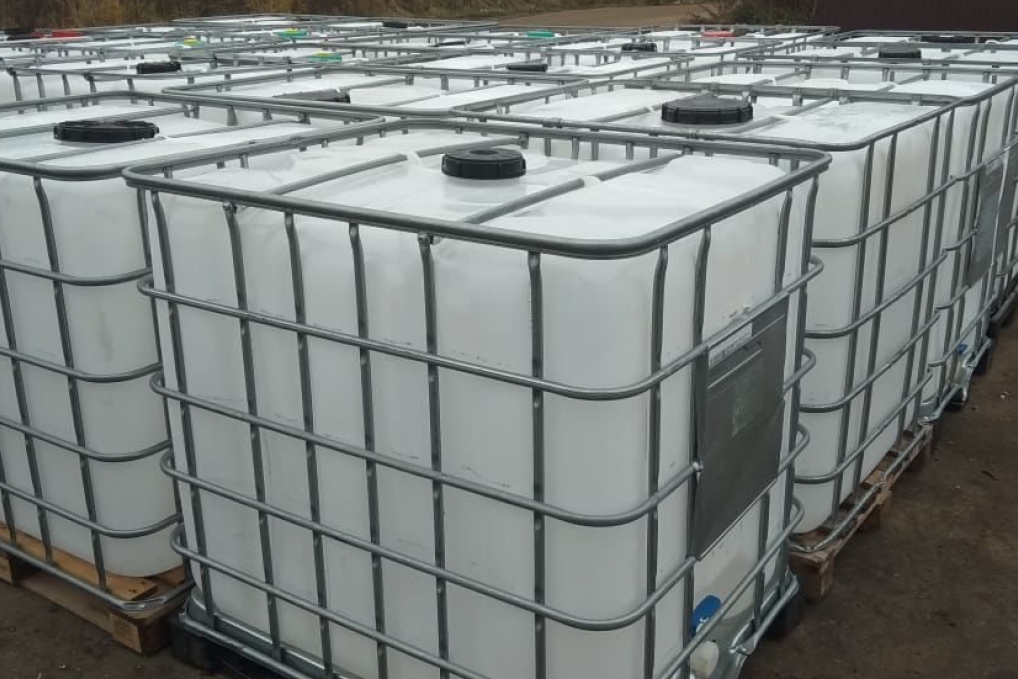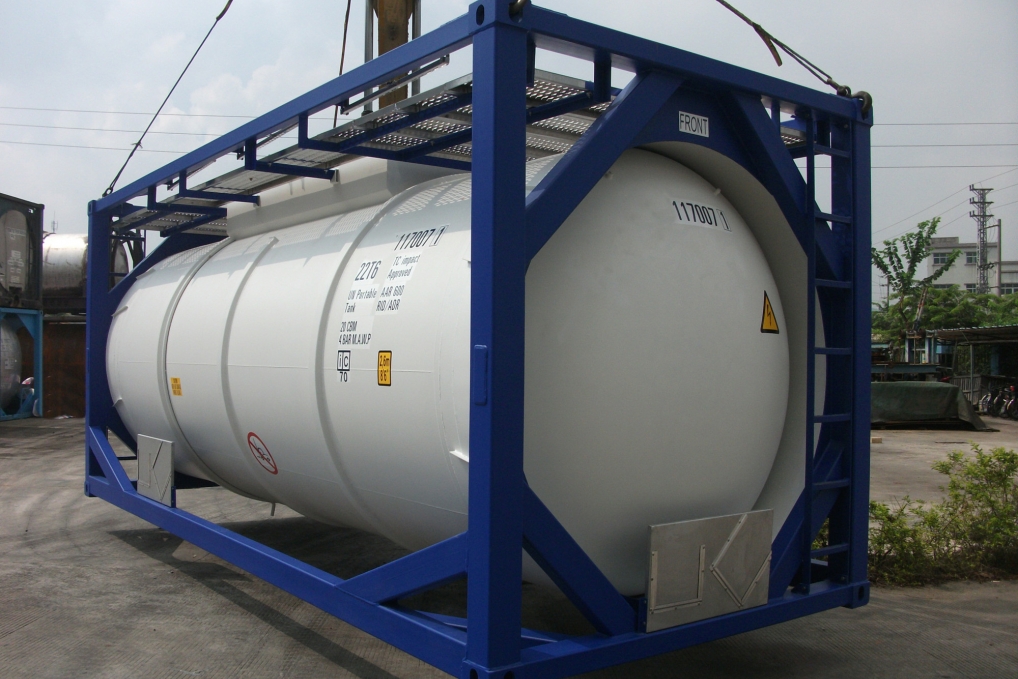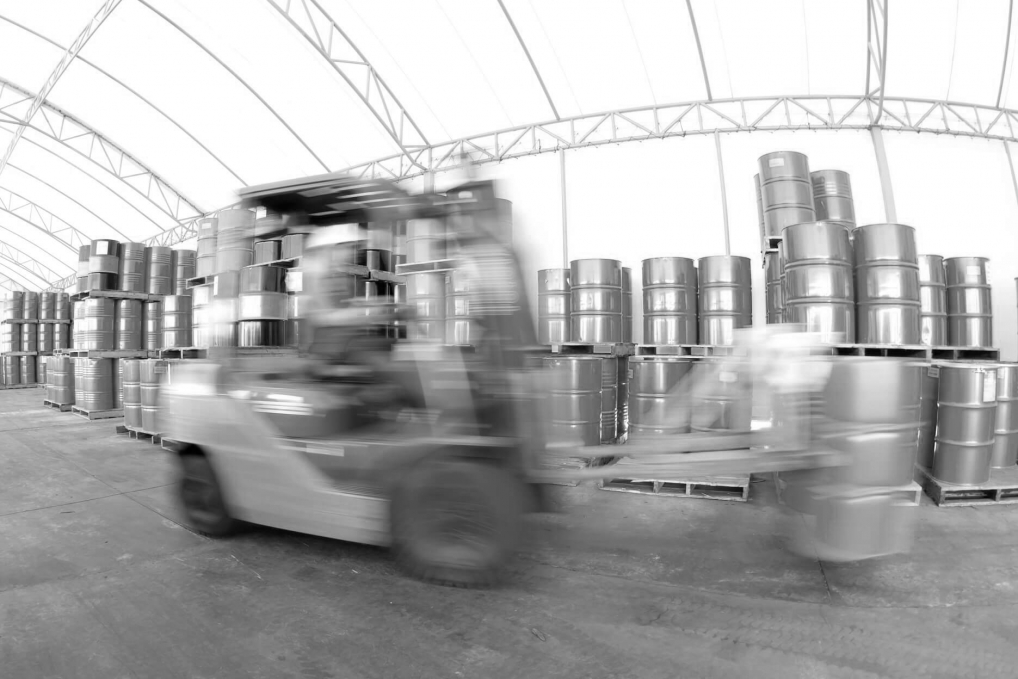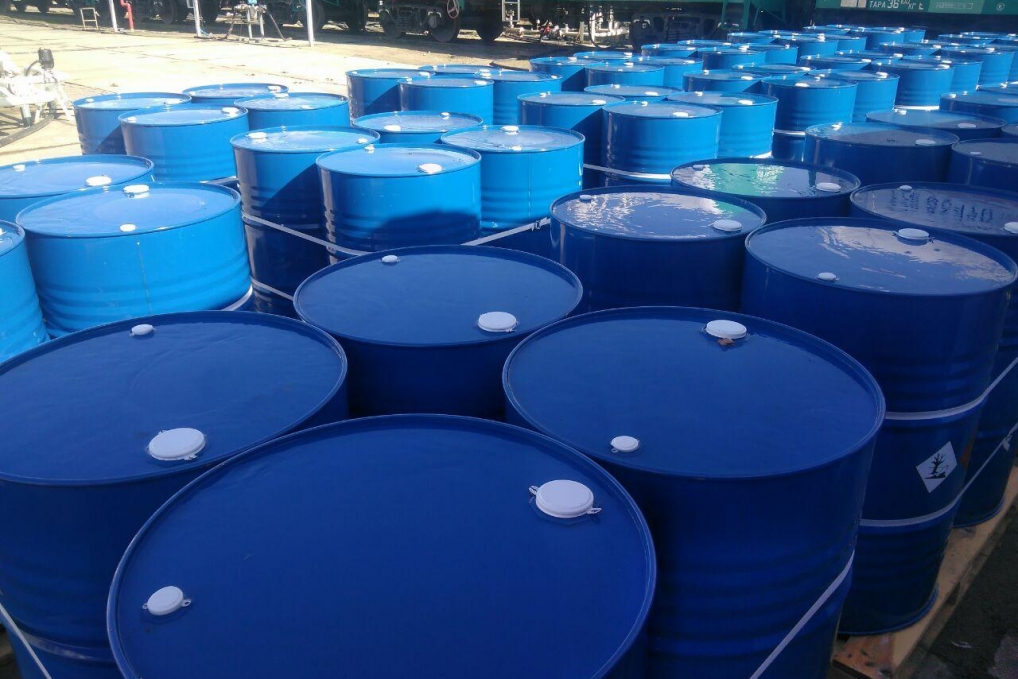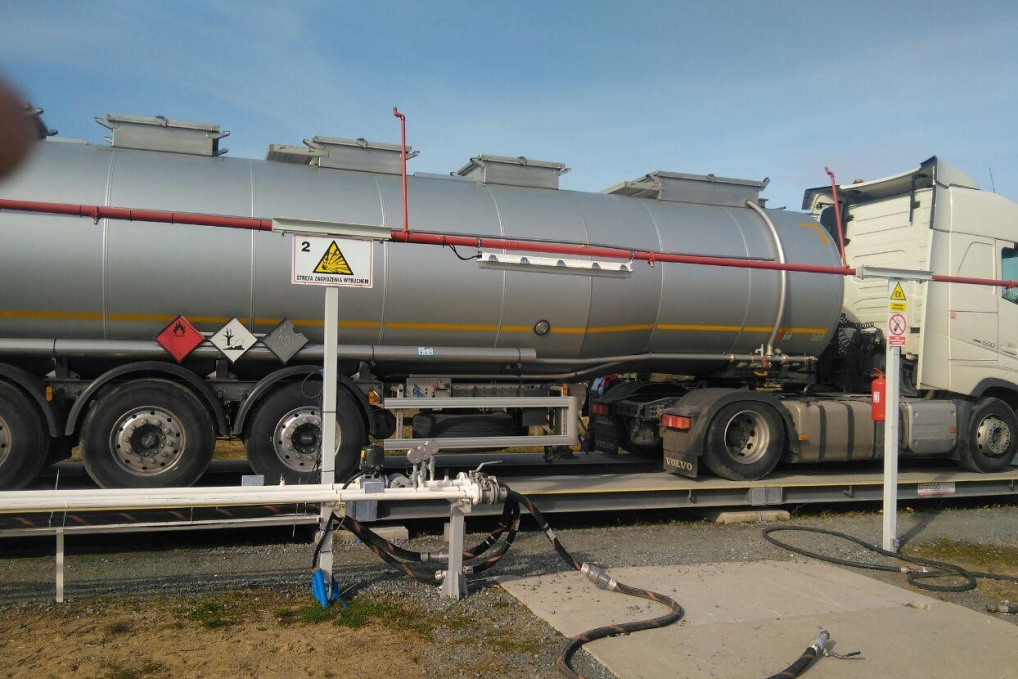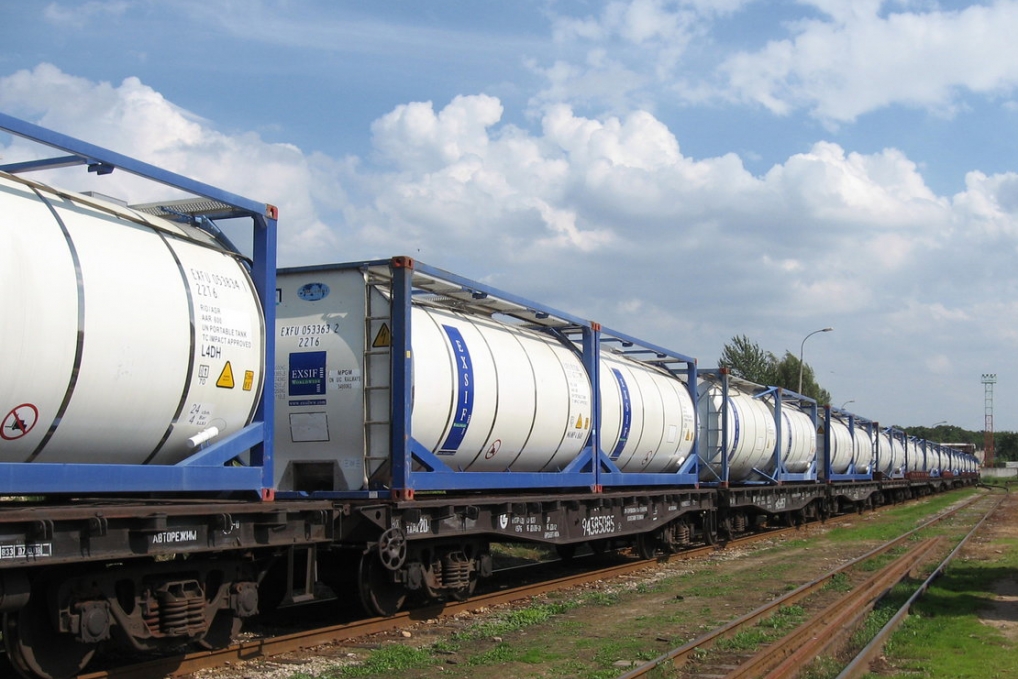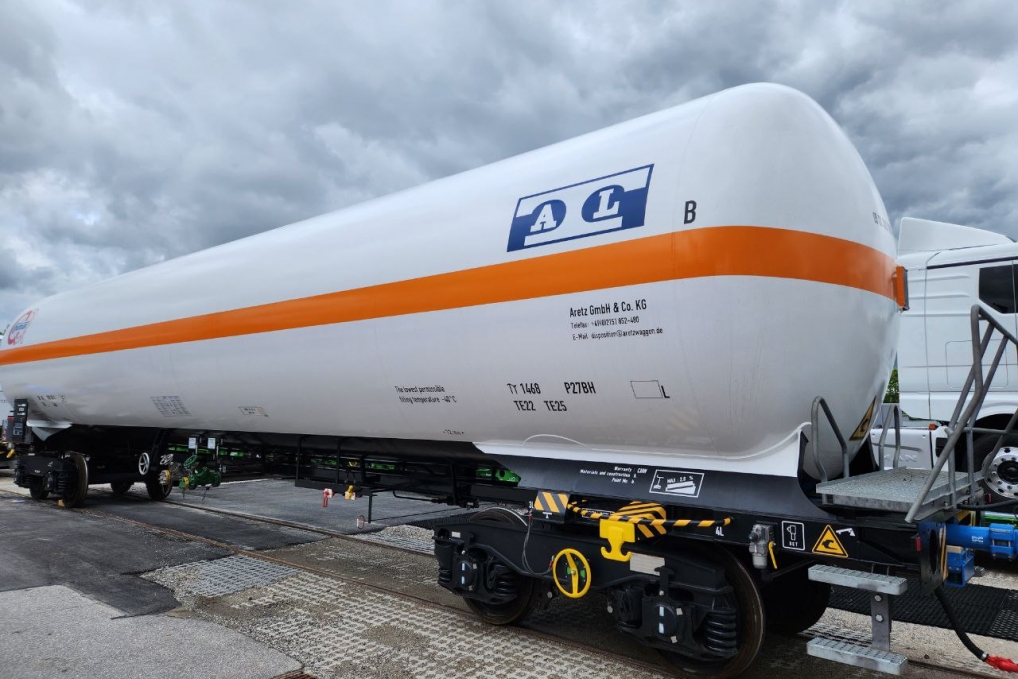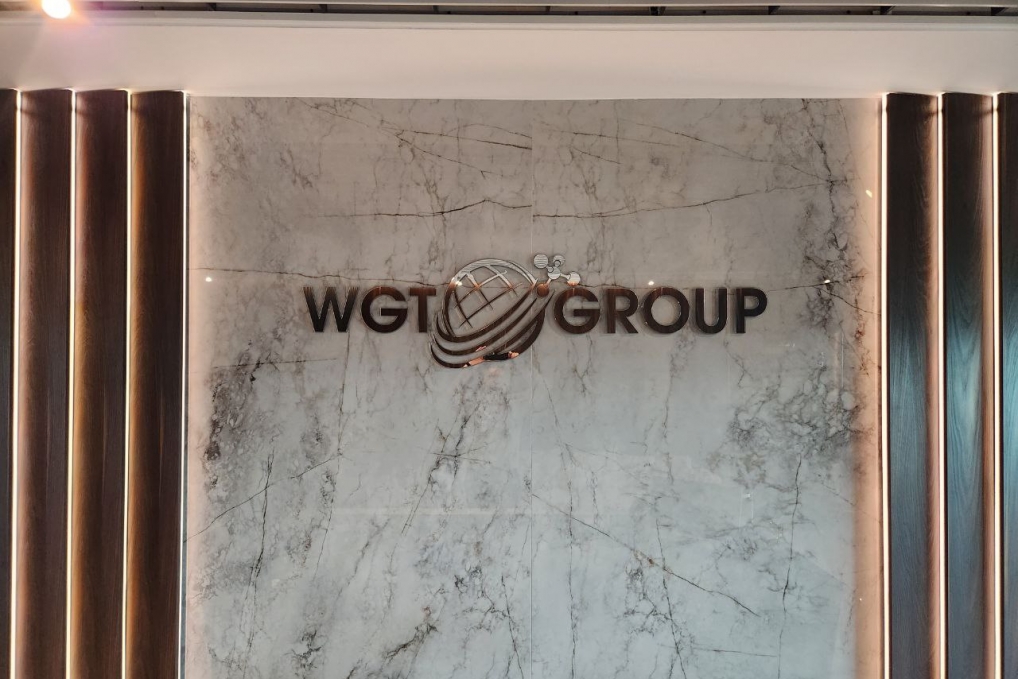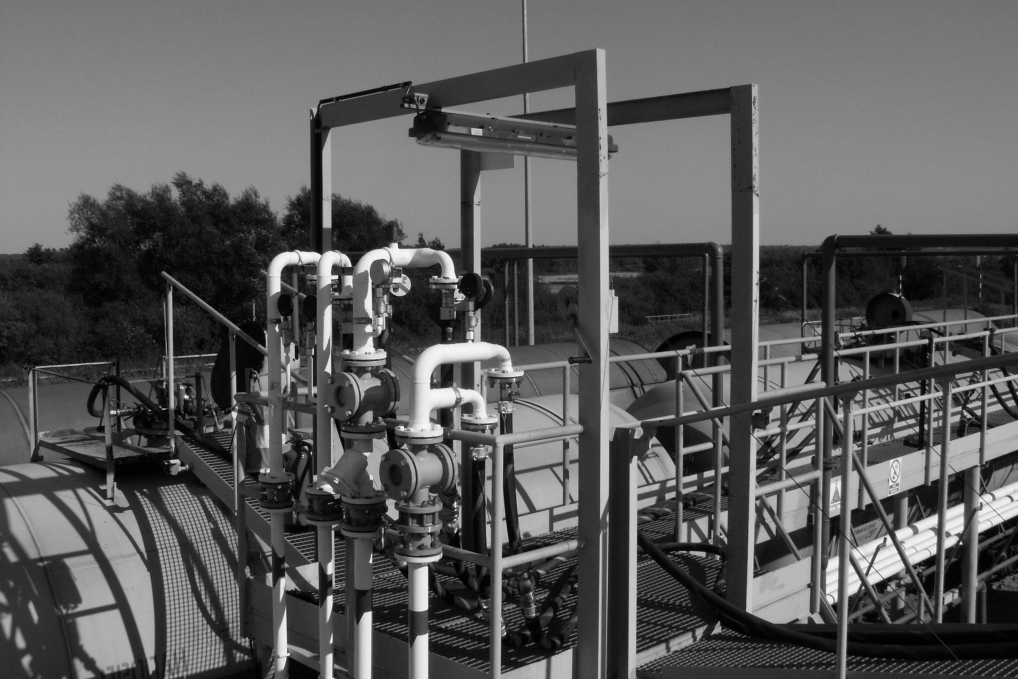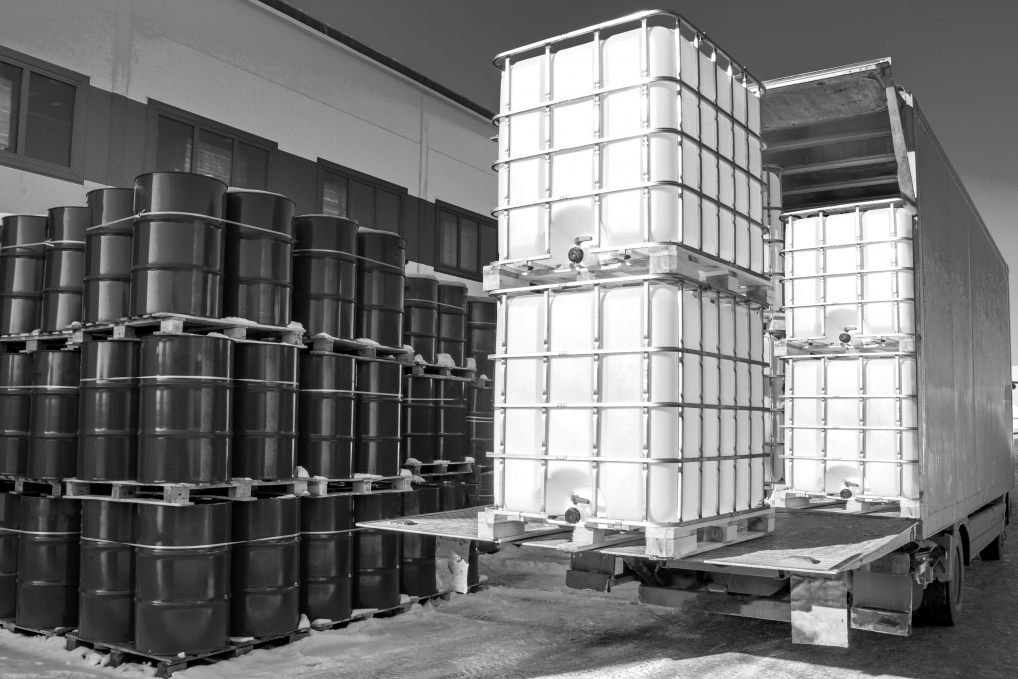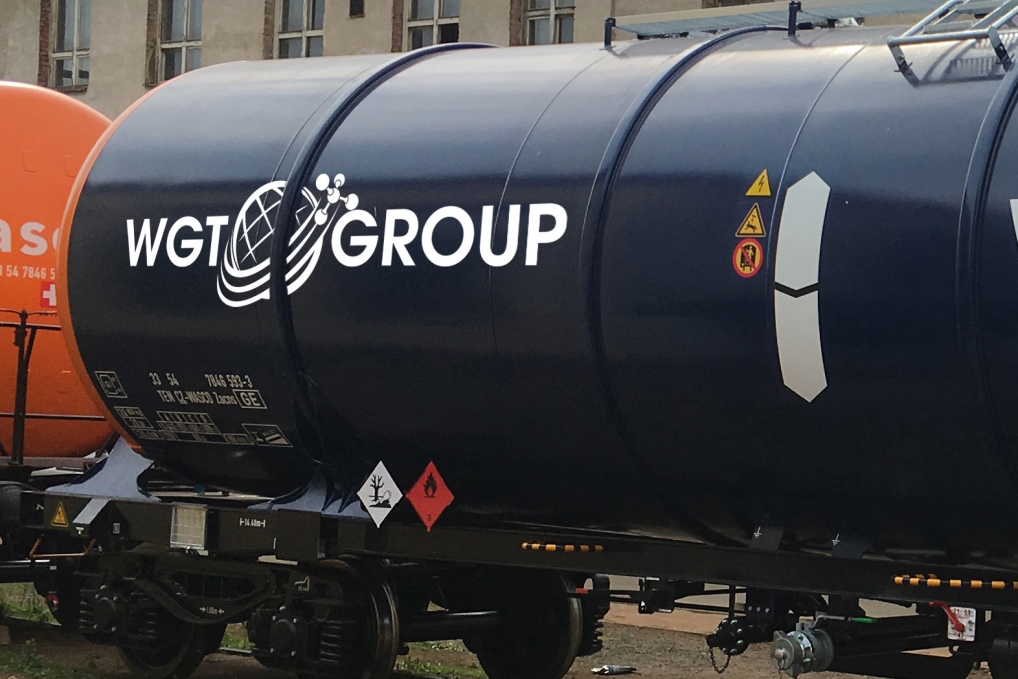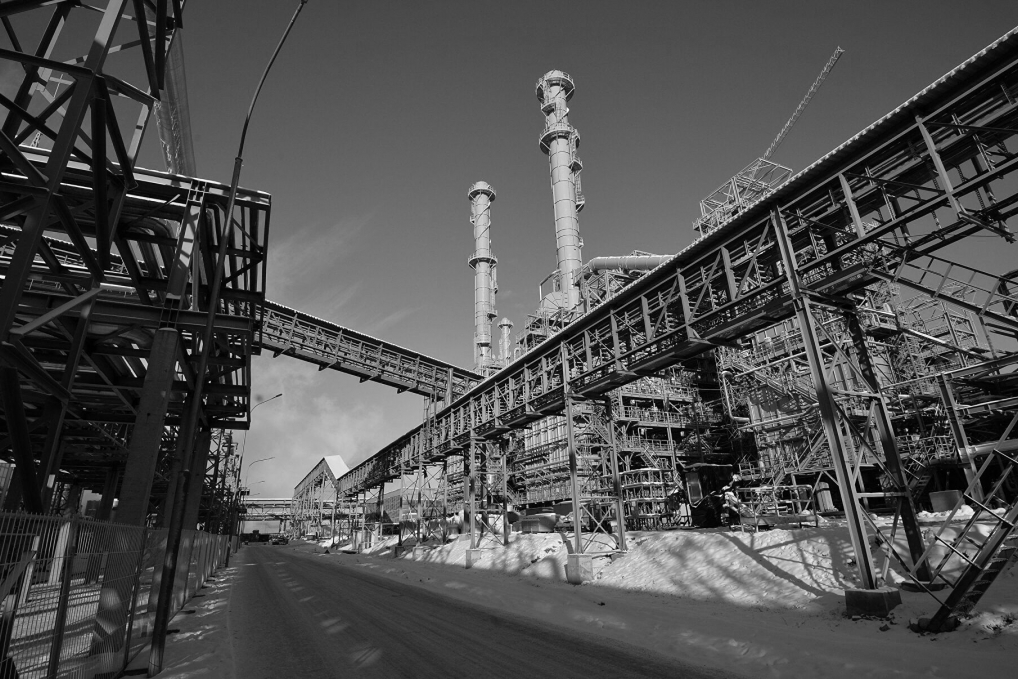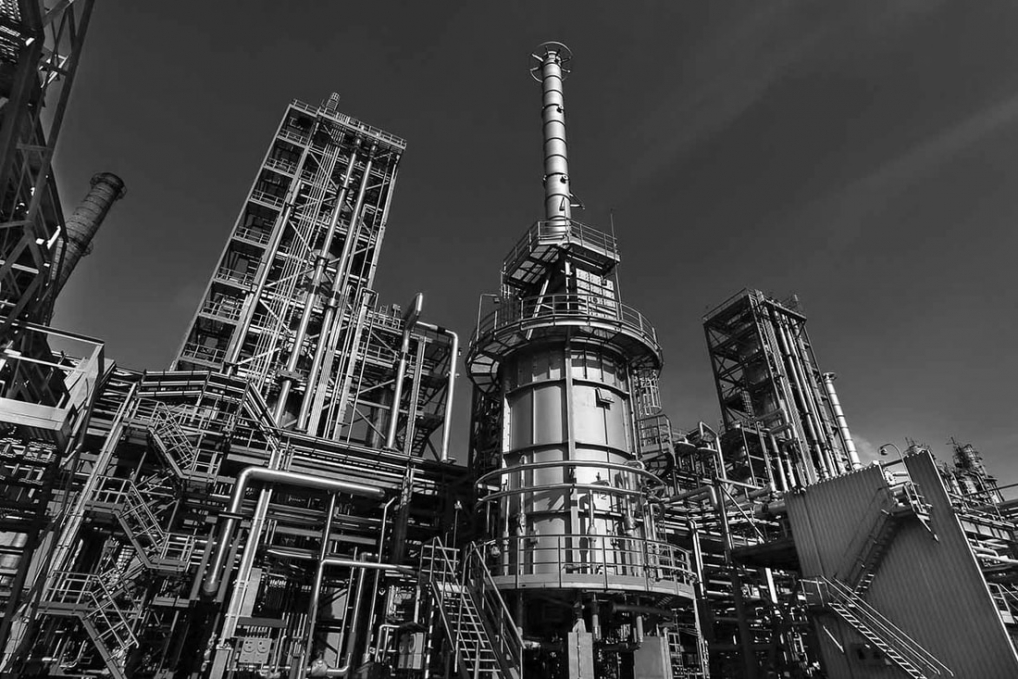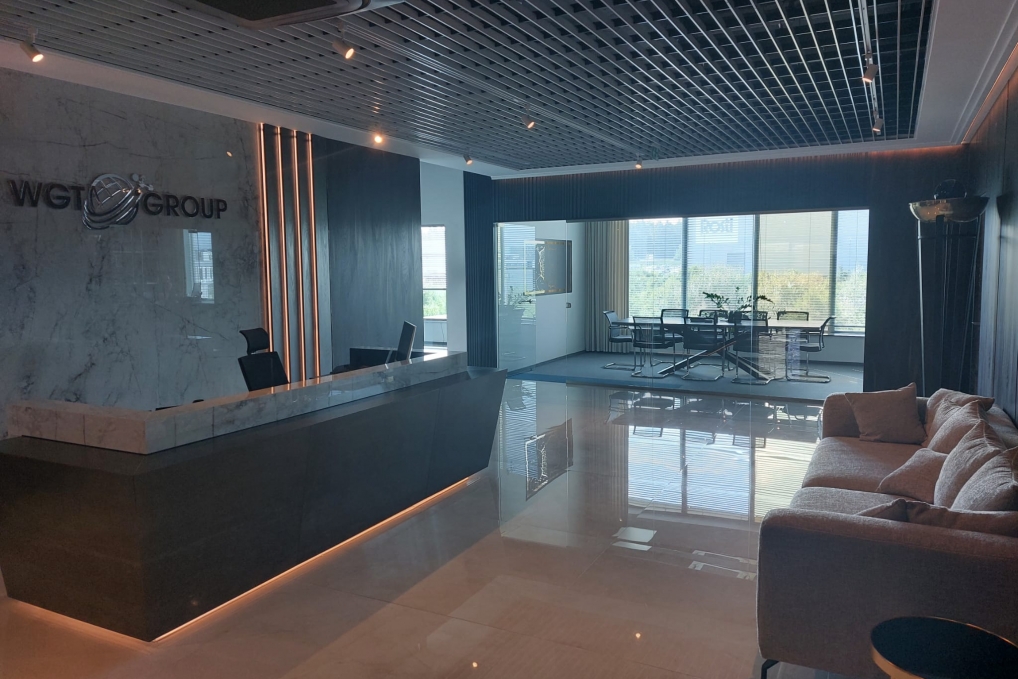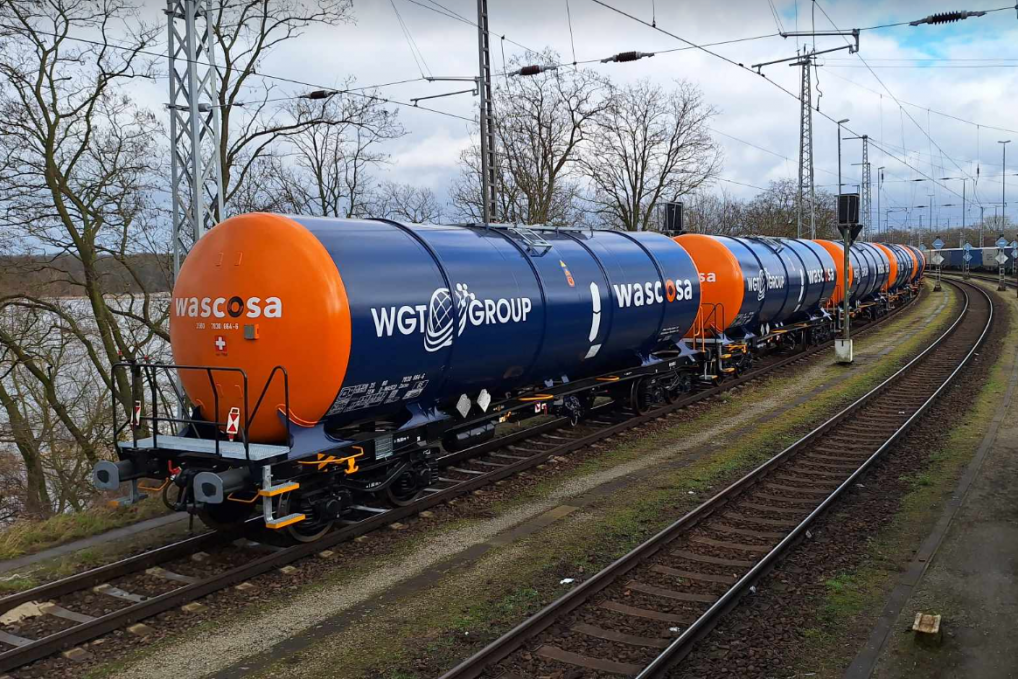Learn more about our products and check...
CERAMIC CHEMISTRY: TECHNICAL DATA SHEET
-
Deflocculating agent Complex M PluseA liquid deflocculating agent consisting of liquid glass and sodium polyacrylate, designed to reduce the viscosity of ceramic slips.
Normal values Indicator Test results Grey or greenish liquid without mechanical inclusions Appearance Grey or greenish liquid without mechanical inclusions Unlimitedly soluble Unlimitedly soluble 1,42±0,07 g/cm³ 1,46 g/cm³ 40±15 s 45 s 10,5-12,5 12 PurposeLowering the viscosity of slips for the production of porcelain stoneware. The recommended amount of additive for introduction into the slip: 0.8-1.5% by weight.StorageKeep in a tightly closed container at a temperature not lower than -5 °C up to 1 year. In case of transportation and storage at negative temperatures, the deflocculating agent must be maintained before use until it reaches the temperature of the production room.Packingplastic drum 20, 50, 100 kg,
IBC tank — 1000-1200 kg. -
Deflocculating agent Complex MA liquid deflocculating agent consisting of liquid glass and sodium polyacrylate, designed to reduce the viscosity of ceramic slips.
Normal values Indicator Test results Grey or greenish liquid without mechanical inclusions Appearance Grey or greenish liquid without mechanical inclusions Unlimitedly soluble Unlimitedly soluble 1,42±0,07 g/cm³ 1,44 g/cm³ 40±15 s 38 s 10,5-12,5 11,5 PurposeLowering the viscosity of slips for the production of porcelain stoneware. The recommended amount of additive for introduction into the slip: 0.8-1.5% by weight.StorageKeep in a tightly closed container at a temperature not lower than -5°C up to 1 year. In case of transportation and storage at negative temperatures, the deflocculating agent must be maintained before use until it reaches the temperature of the production room.Packingplastic drum 20, 50, 100 kg,
IBC tank — 1000-1200 kg. -
Deflocculating agent Complex LA liquid deflocculating agent consisting of liquid glass and sodium polyacrylate, designed to reduce the viscosity of ceramic slips.
Normal values Indicator Test results A liquid deflocculating agent consisting of liquid glass and sodium polyacrylate, designed to reduce the viscosity of ceramic slips Appearance A liquid deflocculating agent consisting of liquid glass and sodium polyacrylate, designed to reduce the viscosity of ceramic slips Unlimitedly soluble Unlimitedly soluble 1,42±0,07 g/cm³ 1,42 g/cm³ 40±15 s 38 s 10,5-12,5 11,5 PurposeLowering the viscosity of slips for the production of porcelain stoneware. The recommended amount of additive for introduction into the slip: 0.8-1.5% by weight.StorageKeep in a tightly closed container at a temperature not lower than -5°C up to 1 year. In case of transportation and storage at negative temperatures, the deflocculating agent must be maintained before use until it reaches the temperature of the production room.Packingplastic drum 20, 50, 100 kg,
IBC tank — 1000-1200 kg. -
Deflocculating agent Complex P75A liquid deflocculating agent consisting of liquid glass and sodium polyacrylate, designed to reduce the viscosity of ceramic slips.
Normal values Indicator Test results A liquid deflocculating agent consisting of liquid glass and sodium polyacrylate, designed to reduce the viscosity of ceramic slips Appearance A liquid deflocculating agent consisting of liquid glass and sodium polyacrylate, designed to reduce the viscosity of ceramic slips Unlimitedly soluble Unlimitedly soluble 1,42±0,07 g/cm³ 1,48 g/cm³ 40±15 s 25 s 10,5-12,5 12 PurposeLowering the viscosity of slips for the production of porcelain stoneware. The recommended amount of additive for introduction into the slip: 0.8-1.5% by weight.StorageKeep in a tightly closed container at a temperature not lower than -5°C up to 1 year. In case of transportation and storage at negative temperatures, the deflocculating agent must be maintained before use until it reaches the temperature of the production room.Packingplastic drum 20, 50, 100 kg,
IBC tank — 1000-1200 kg. -
Deflocculating agent Complex N5050A liquid deflocculating agent consisting of liquid glass and sodium polyacrylate, designed to reduce the viscosity of ceramic slips.
Normal values Indicator Test results Grey or greenish liquid without mechanical inclusions Appearance Grey or greenish liquid without mechanical inclusions Unlimitedly soluble Unlimitedly soluble 1,42±0,07 g/cm³ 1,49 g/cm³ 40±15 s 55 s 10,5-12,5 12,5 PurposeLowering the viscosity of slips for the production of porcelain stoneware. The recommended amount of additive for introduction into the slip: 0.8-1.5% by weight.StorageKeep in a tightly closed container at a temperature not lower than -5°C up to 1 year. In case of transportation and storage at negative temperatures, the deflocculating agent must be maintained before use until it reaches the temperature of the production room.Packingplastic drum 20, 50, 100 kg,
IBC tank — 1000-1200 kg. -
Hardener 2112A mixture of water-soluble polymers designed to increase the mechanical strength of pressed ceramic tiles after drying. The Hardener 29 burns out completely during the firing of the tile (at the specified dosages), and does not create volumetric pores and defects of the “black core” type in the tile.
Indicator Test results Appearance Transparent liquid with a negligible amount of small inclusions Unlimitedly soluble 1,01-1,05 g/cm³ 11-25 s 7,0-8,5 PurposeIncreasing the mechanical strength of pressed tiles after drying. The recommended amount of additive for inception into the slip: 0.4-1.0% by weight. The Hardener 29 is introduced at the stage of draining the slip from the mill, or into the storage tank of the slip, while it is necessary to mix the slip with the additive for at least 3 hours before drying in the atomizer. During the drying process of the pressed tiles, the maximum temperature should be at least 110°C.StorageKeep in a tightly closed container at a temperature not lower than -5°C for up to 6 months. In case of transportation and storage at negative temperatures, the deflocculating agent must be maintained before use until it reaches the temperature of the production room.Packingplastic drum 20, 50, 100 kg,
IBC tank — 1000-1200 kg. -
Hardener 2112IIHardener 2112II is a water-soluble polymer designed to increase the mechanical strength of pressed ceramic tiles after drying. Hardener 2112II burns out completely during the firing of the tile (at the specified dosages) and does not create volumetric pores or defects of the “black core” type in the tile.
Indicator Test results Appearance Dry powder with a yellowish tinge Humidity, % Do 5 PurposeIncreasing the mechanical strength of pressed tiles after drying. The Hardener 2112II is introduced together with raw materials into a wet grinding mill, or during clay dissolving. It is also allowed to add it to the storage tank of the slip, while it is necessary to mix the slip with the additive for at least 3 hours before drying in an atomizer. During the drying process of the pressed tiles, the maximum temperature should be at least 110 °C.StorageKeep in a dry enclosed space up to 1 year.Packing25 kg Polypropylene bags with a polyethylene liner
-
Defloculant concentrate PKB-41Concentrate PKB-41 is a liquid concentrate of a deflocculant based on sodium polyacrylate, developed for the production of liquid diluents of ceramic slips.
Indicator Test results Appearance From transparent to yellow-brown color. Unlimitedly soluble 1,2-1,3 g/cm³ 1,5-4 min 6,5-8,5 PurposeIt is used for the preparation of a liquid diluent of ceramic slips. For the manufacture of a complex liquid diluent, it is recommended to use PKB-41 deflocculant concentrate together with liquid glass, the silicate module of which should be within 2.0-3.2. The recommended ratio of PKB-41 to liquid glass is (7.5-30) : (70-92.5) accordingly. The complex liquid diluent is prepared by mixing liquid glass and PKB-41 with thorough mixing. The recommended dosage of the prepared complex diluent is 0.8-1.5%.StorageKeep in a tightly closed container at a temperature not lower than -5°C up to 1 year. In case of transportation and storage at negative temperatures, the deflocculating agent must be maintained before use until it reaches the temperature of the production room.Packingplastic drum 20, 50, 100 kg,
IBC tank — 1000-1200 kg. -
Deflocculant concentrate PKB 47Concentrate PKB 47 is a liquid concentrate of a deflocculant based on sodium polyacrylate, developed for the production of liquid diluents of ceramic slips.
Indicator Test results Appearance From yellow to yellow-brown color Unlimitedly soluble 1,2-1,3 g/cm³ 1-3 min 6,5-8,5 PurposeIt is used for the preparation of a liquid diluent of ceramic slips. For the manufacture of a complex liquid diluent, it is recommended to use PKB-47 deflocculant concentrate together with liquid glass, the silicate module of which should be within 2.0-3.2. The recommended ratio of PKB-47 to liquid glass is (7.5-30) : (70-92.5) accordingly. The complex liquid diluent is prepared by mixing liquid glass and PKB-47 with thorough mixing. The recommended dosage of the prepared complex diluent is 0.8-1.5%.StorageKeep in a tightly closed container at a temperature of at least -5°C up to 1 year. In case of transportation and storage at negative temperatures, the deflocculant must be maintained before use until it reaches the temperature of the production room.Packingplastic drum 20, 50, 100 kg,
IBC tank — 1000-1200 kg. -
Defloculant concentrate PKB-30Concentrate PKB-30 is a liquid concentrate of a deflocculant based on sodium polyacrylate, developed for the production of liquid diluents of ceramic slips.
Indicator Test results Appearance From transparent to yellow-brown color. Unlimitedly soluble 1,1-1,3 g/cm³ Mniej niż 1,5 min 6,5-8,5 PurposeIt is used for the preparation of a liquid diluent of ceramic slips. For the manufacture of a complex liquid diluent, it is recommended to use PKB-30 deflocculant concentrate together with liquid glass, the silicate module of which should be within 2.0-3.2. The recommended ratio of PKB-30 to liquid glass is (7.5-30) : (70-92.5) accordingly. The complex liquid diluent is prepared by mixing liquid glass and PKB-30 with thorough mixing. The recommended dosage of the prepared complex diluent is 0.8-1.5%.StorageKeep in a tightly closed container at a temperature of at least -5°C up to 1 year. In case of transportation and storage at negative temperatures, the deflocculant must be maintained before use until it reaches the temperature of the production room.Packingplastic drum 20, 50, 100 kg,
IBC tank — 1000-1200 kg.
-
Deflocculating agents Complex PKB 41Liquid deflocculant agents based on sodium polyacrylate, designed to dilute glazes, slipwares, fluxes.
Indicator Test results Appearance From transparent to yellow-brown color. Unlimitedly soluble 1,2-1,3 g/cm³ 1,5-4 min 6,5-8,5 PurposeIt is used to dilute glazes, slipwares, fluxes. Deflocculating agent Complex PKB-41 is recommended to be used both for the joint grinding of raw materials in a wet grinding mill in an amount of 0.4%-1.0%, and added to the prepared semi-finished product (glaze, slipware, flux) on the production line. It is necessary to mix the semi-finished product thoroughly for 15-30 minutes when Complex PKB-41 is being introduced into a spare bath.StorageKeep in a tightly closed container at a temperature of at least -5°C up to 1 year. In case of transportation and storage at negative temperatures, the deflocculant must be maintained before use until it reaches the temperature of the production room.Packingplastic drum 20, 50, 100 kg,
IBC tank — 1000-1200 kg. -
Deflocculating agents Complex PKB 47Liquid deflocculant agents based on sodium polyacrylate, designed to dilute glazes, slipwares, fluxes.
Indicator Test results Appearance From transparent to yellow-brown color. Unlimitedly soluble 1,2-1,3 g/cm³ 1-3 min 6,5-8,5 PurposeIt is used to dilute glazes, slipwares, fluxes. Deflocculating agent Complex PKB-47 is recommended to be used both for the joint grinding of raw materials in a wet grinding mill in an amount of 0.4%-1.0%, and added to the prepared semi-finished product (glaze, slipware, flux) on the production line. It is necessary to mix the semi-finished product thoroughly for 15-30 minutes when Complex PKB-47 is being introduced into a spare bath.StorageKeep in a tightly closed container at a temperature of at least -5°C up to 1 year. In case of transportation and storage at negative temperatures, the deflocculant must be maintained before use until it reaches the temperature of the production room.Packingplastic drum 20, 50, 100 kg,
IBC tank — 1000-1200 kg.
-
Stabcon M adhesiveStabcon M adhesive is an aqueous polymer solution. In appearance, it is a viscous liquid from yellow to yellow-beige in color
Indicator Normal value Appearance Color from yellow to beige 1,0-1,2 g/cm³ 1,0-5,0 min 6,0-12,5 PurposeAn aqueous solution of glue is applied in front of digital printing machines, eliminates dusting of the glaze, provides the necessary viscosity of the glaze, slipware (when added directly to the glaze), provides adhesion of the glaze to the substrate. Glaze with the addition of Stabcon M can be applied by Vela, bell, or other installations. When applying the glue independently, Stabcon M by spraying is recommended to dilute it with water in a ratio of 1:(15-25). Recommended amount of adhesive Stabcon M for introduction into the glaze: 0.5-1.5% by weight, add to the glaze it is possible when grinding it, as well as directly into the spare bath on the conveyor.StorageKeep in a tightly closed container at a temperature of at least -5°C up to 6 months. In case of transportation and storage at negative temperatures, the adhesive must be maintained before use until it reaches the temperature of the production room.Packingplastic drum 20, 50, 100 kg,
IBC tank — 1000-1200 kg. -
Stabcon M adhesive (modified)Stabcon M adhesive (modified) is an aqueous solution of a polymer. In appearance, it is a viscous liquid from transparent to yellow color.
Indicator Normal value Appearance From transparent to yellow color. 1,0-1,2 g/cm³ 1,0-5,0 min 6,0-12,5 PurposeExtends the drying process of the glaze when applying it on the conveyor and thereby eliminates its dusting before applying the design by digital printing machines, provides the necessary viscosity of the glaze, optimal drying time, solves the problem of the “orange peel” defect, ensures the adhesion of the glaze to the substrate. Glaze with the addition of Stabcon M (modified) can be applied by Vela, Airless (Airpower, discs), bell, and other installations. The recommended amount of solution for introduction into the glaze: 0.5-1.5% by weight, you can add it to the glaze when it is grinding, as well as directly into the spare tub on the conveyor.StorageKeep in a tightly closed container at a temperature of at least -5°C up to 1 year. In case of transportation and storage at negative temperatures, the adhesive must be maintained before use until it reaches the temperature of the production room.Packingplastic drum 20, 50, 100 kg,
IBC tank — 1000-1200 kg. -
Stabcon GR AdhesiveIt is an additive based on a high-molecular polymer, which is used in the mixture when applying sprinkles by spraying. Depending on the amount of water in the mixture and the desired size of the sparkles, there are a number of Stabcon GR products.
Indicator Stabkon GR6 Stabkon GR81 Srabkon GR608 Appearance Kolor jasnobeżowy do brązowego Kolor beżowy do brązowego Kolor jasnoszary z brązowym odcieniem 1-1,05 g/cm³ 1-1,05 g/cm³ 1-1,05 g/cm³ 2-4 min More than 4 min No fluidity 6,5-8,5 6,5-8,5 6,5-8,5 PurposeThe StabconGR glue is designed to maintain the sprinkles in a suspended state. In appearance, it is a viscous heterogeneous liquid from transparent to beige colors. The additive is recommended to be used together with water and sprinkles, and it is possible to add glaze. The preparation of the mixture should be carried out before use. It is recommended to use Stabcon GR glue in the following formulations: Stabcon GR (10%-20%), sprinkles (5%-15%), water (65%-80%). If glaze is added, then Stabcon GR (5%-10%), sprinkles (5%-15%), glaze (75%-90%).StorageKeep in a tightly closed container at a temperature of at least - 5°C up to 6 month. In case of transportation and storage at negative temperatures, the adhesive must be maintained before use until it reaches the temperature of the production roomPackingplastic drum 20, 50, 100 kg,
IBC tank — 1000-1200 kg.
-
Deflocculating agents Complex PKB 41, Complex PKB 47.Deflocculating agents Complex PKB 41, 47 are liquid formulations based on sodium polyacrylate, designed to reduce the viscosity of sanitary product slips.
Indicator Test results Appearance From transparent to yellow-brown color. Unlimitedly soluble 1,1-1,3 g/cm³ 1,5-4 min 6,5-8,5 PurposeReduction of the viscosity of sanitary products’ slips. The amount of additive recommended for introduction into the slip: 0.1-1.5% by weight.StorageKeep in a tightly closed container at a temperature of at least -5°C up to 1 year. In case of transportation and storage at negative temperatures, the deflocculating agent must be maintained before use until it reaches the temperature of the production room.Packingplastic drum 20, 50, 100 kg,
IBC tank — 1000-1200 kg. -
Additive Stabcon Sanitary 88Is a dry powder from beige to gray color.
Indicator Mark of compliance Appearance Loose powder, color from light beige to gray Humidity, % 7-12 PurposeIt maintains the glaze in a suspended state, prevents the separation of the glaze in storage tanks, working baths, and also ensures smooth application of the glaze (without streaks) by spraying on sanitary products. The additive is introduced into the glaze in an amount from 0.2 to 1%.StorageThe additive agent must be maintained before use until it reaches the temperature of the production room.Packing25 kg polypropylene bags with a polyethylene liner. -
Antibacterial additive Antibac 15A preservative that provides a wide range of activity against bacteria, yeast, fungi, and mold.
Indicator Normal value Appearance Transparent liquid without mechanical inclusions 1,03-1,07 g/cm³ 10-15 s 6,8-9,0 PurposePurpose Antibac 15 is a liquid product that easily incorporates into water systems (glazes) and ensures long-term preservation of the properties of the glaze. The recommended introduction of the antibacterial additive into the glaze is 0.3-0.7%.StorageKeep in a tightly closed container at a temperature of at least -5°C up to 1 year. In case of transportation and storage at negative temperatures, the additive must be maintained before use until it reaches the temperature of the production room.Packingplastic drum 20, 50, 100 kg,
IBC tank — 1000-1200 kg.
download the catalogue


 +48 856 520 044
+48 856 520 044  biuro@wgtg.pl
biuro@wgtg.pl  ul. Myśliwska 14,15-569, Bialystok, Poland
ul. Myśliwska 14,15-569, Bialystok, Poland  Pon-Pt 08.00-16.00
Pon-Pt 08.00-16.00  +48 856 520 044
+48 856 520 044  biuro@wgtg.pl
biuro@wgtg.pl 